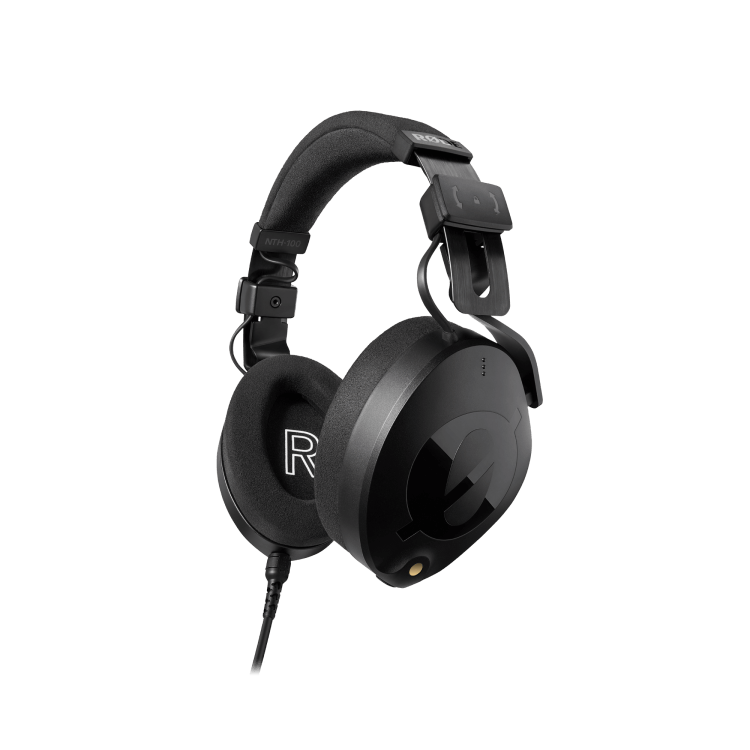With its debut headphones, Rode aims to grab attention by standing out. The NTH-100 is a closed-back over-ear design like nothing else, from the triangular ear cups to the included cable color-coding kit. It’s intended to be “the ideal monitoring solution for all forms of content creation” from music production and mixing, to podcasting and location recording. It seems that with NTH-100, Rode wants to lure over the potential Audio-Technica’s ATH-M50x buyers. Let’s see how they stack up.

- Quality materials
- Good comfort
- CoolTech gel helps to reduce heat buildup
Pros list with SoundID Reference calibration
- Neutral frequency response
- Severe sound coloration
- Numerous reports of FitLok failing
- Channel imbalance in low-mids
As expected for such closed-back models with low impedance, they are compatible with any device you may find. Reaching sufficient volume should be no issue.
NTH-100 leaves a good first impression in terms of the materials used and attention to detail. While most of the build is plastic, it’s nice to see that yokes, which are a common point of failure in headphones, are metal. The Alcantara ear pads and headband cushion are of great quality and feel more premium than one might expect at the €122 price point.
One of the features rarely seen in other headphones is the option to attach and lock the cable to either of the ear cups, which is convenient but, unfortunately, leaves an impact on the channel balance. More on that later.
Another feature that’s unique to NTH-100 is the ability to color-code the cables with the included plastic rings, which might come in handy in a band monitoring scenario if multiple Rode units are present.
Continuing on the theme of unique design, the simple act of adjusting ear cups on the headband for your head size feels a bit over-designed in an effort to solve a problem that doesn’t really need fixing. Ear cups slide via slots in the steel headband and are fixed in place using the FitLok system of fragile plastic parts. It’s designed to allow the user to lock the ear cup position on the headband for just the right fit every time you pick them up. While in theory this seems like a reasonable idea, in practice it’s a bit finicky to set up, and is annoying in a scenario where you need to share the same pair with another person. Yet, worst of all, there are many reports online of the FitLok system breaking.
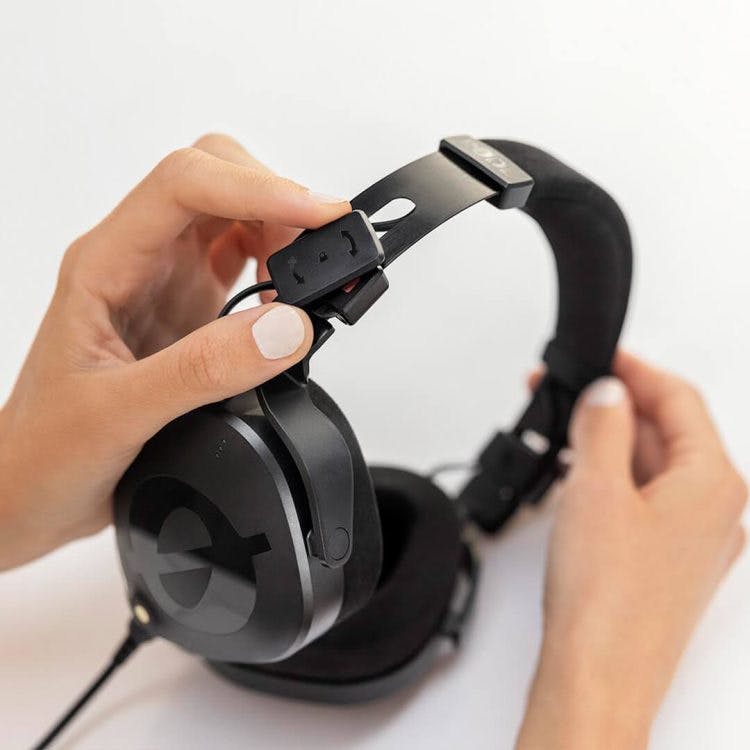
Overall, if it weren’t for the FitLok, NTH-100 would score high, especially given its affordable price.
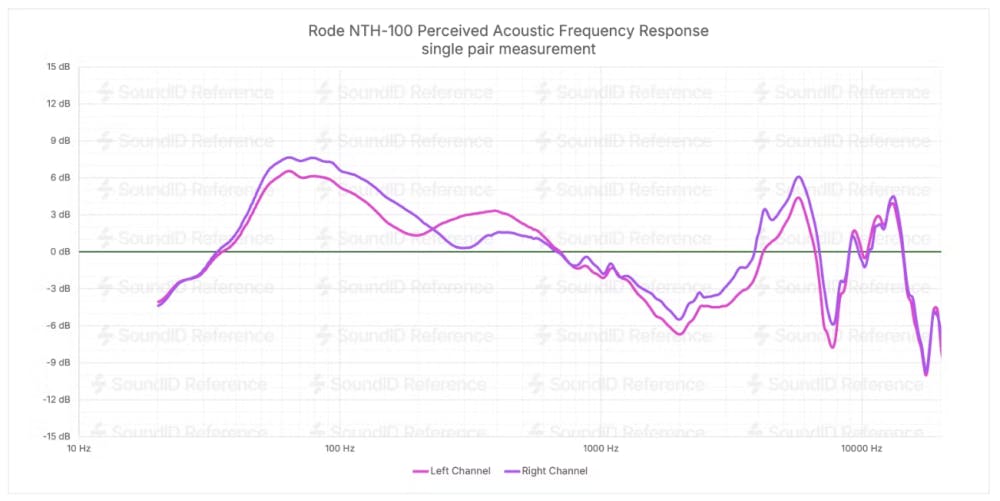
Rode NTH-100 sound signature is yet another aspect of the model that is rather unique. The sound is darker than a quick glance at the frequency response graph might suggest, as the bass boost extends up to 200 Hz and overpowers the highs, which unfortunately can’t be described as smooth. At around 8kH,z there’s a significant dip in the response, veiling the treble with unnatural coloration. The wide bandwidth attenuation in high mids, along with slightly elevated low mids, further contributes to the boomy sound impression.
Rode in marketing materials state that the drivers are individually matched. Indeed, it seems to be the case; however, there’s a misleading aspect to it. NTH-100 has this feature that allows for the cable to be connected to either the left or right ear cup. If each channel is measured individually, with the cable connection switched between measurements so it’s attached to the cup that isn’t measured at the time, both drivers indeed are remarkably well matched. Impressive for headphones at this price segment! However, obviously, that doesn’t represent the actual use case. In practice, the side that is used for cable connection exhibits bass attenuation and a boost in the lower mids. This effect is illustrated in the graph above, which represents the scenario where the cable is secured to the left ear cup. The issue is not blatantly obvious, but it is perceivable if you pay attention to the low mid-region. Nevertheless, one of the most popular studio headphones ever, the Audio-Technica ATH-M50x, exhibits a similar imbalance pattern.
One of the exotic design choices on the NTH-100 that leaves no complaints is the triangular-shaped Alcantara ear pads. They’re not the largest and roomiest pads, so bigger ears will not fit inside entirely; however, the shape compresses the earlobes in a very natural way, not hindering long session comfort. The Alcantara-covered headband forms a slight pressure point at the top, but it’s minor and tolerable for a considerable time.
Another one of the unique features that we liked is the CoolTech gel used in the earpads that appears to be working, since the ears were kept cool for longer compared to similar closed-back designs.
Your mileage may vary, but in our office, people tend to prefer the NTH-100 over the ATH-M50x in terms of comfort. Overall, this is one aspect where NTH-100 shines.
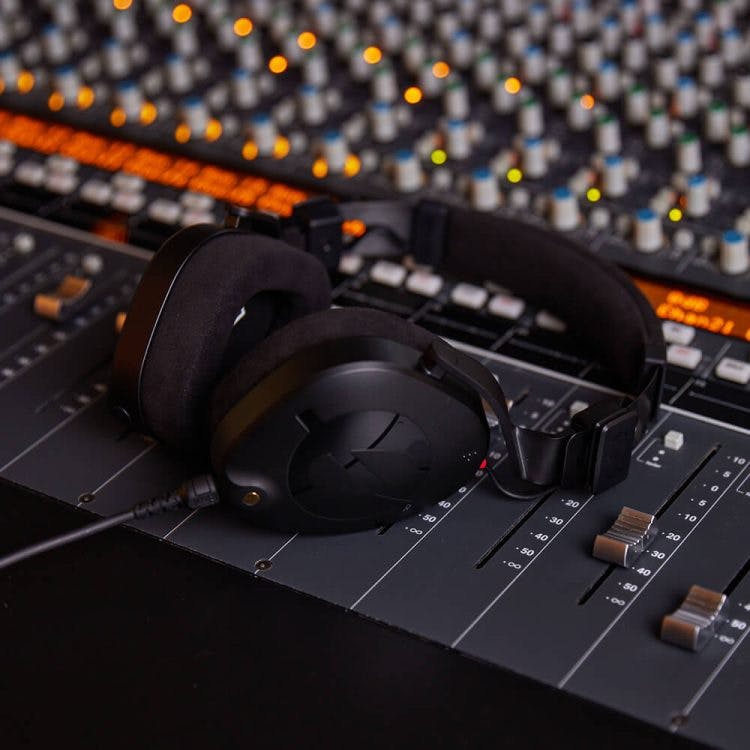
At €122, NTH-100 is around €30 cheaper than the main competitors—the Audio Technica ATH-M50x, Beyerdynamic DT 770 Pro, and AKG K-371. Rodes’ offering uses nicer materials and has great comfort for the segment, but it suffers from the most severe sound coloration and a high possibility of the FitLok system failing, which makes it a hard sell.
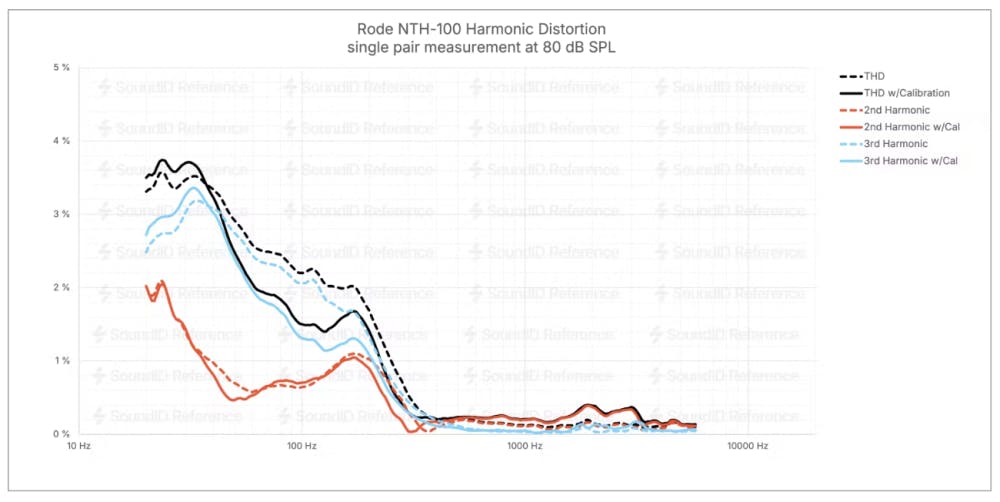
This is the worst THD graph we’ve seen in a while, with 3rd harmonic distortion reaching 2% at 100Hz. Drivers of other recent models tend to show very low distortion values and, more importantly, lower in the frequency range. Since the SoundID calibration attenuates bass amplitude, it also brings down the signal-to-distortion ratio, thus THD. The low end is not pristine enough for serious mastering work, but is just fine for production and mixing.
How accurate and consistent is the correction effect among different listeners?NTH-100 delivers consistent sound to different listeners with an adequate level of consistency, especially for a closed-back unit.
How much do they differ pair to pair in terms of frequency response?Out of the 3 measured pairs, one had a 4dB bass increase over the others. Another 4dB split among pairs is in the high-mids around 3 kHz. Given the price of the NTH-100, such differences are not out of the ordinary, and we’ve seen worse offenders. This does impact the accuracy of the model average calibration profile of SoundID Reference.
Rating
Conclusion
Perhaps with NTH-100, Rode has put a bit too much emphasis on innovation to tackle quite niche issues, while losing focus on more significant aspects like general durability. The FitLok feature offers little benefit from a usability perspective but is a common point of failure. It’s a shame since the price is quite affordable, Alcantara contact points feel great, and with SoundID Reference calibration, they do sound good. Regardless, it’s not the tool for tasks requiring utmost precision, like mastering, due to slightly noticeable THD and channel imbalance. The uncalibrated sound is uniquely dark, which doesn’t aid in giving an impression of how your work will translate on other systems. But if you’re after headphones for production and recording in this price range and don’t mind being delicate with them, we won’t judge if you decide to roll the dice. Our pairs are still intact.
Final Rating
Calibration Enabled
Calibration
